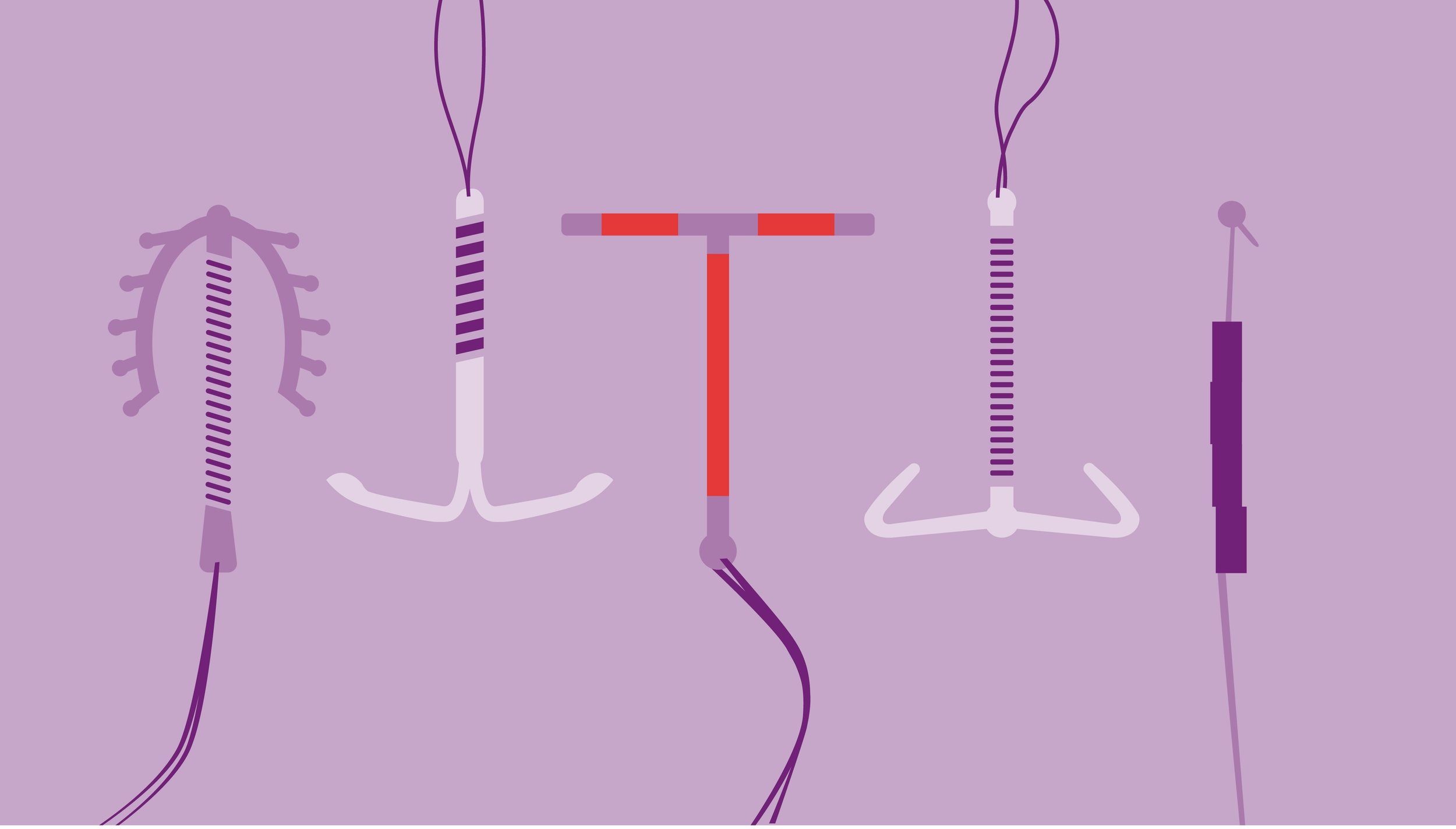Intrauterine Device (IUD)

What’s an IUD?
An IUD is a tiny device that's put into your uterus to prevent pregnancy. It’s long-term, reversible, and one of the most effective birth control methods out there.
IUD stands for Intrauterine Device (basically: a device inside your uterus). It's a small piece of flexible plastic shaped like a T. Sometimes it’s called an IUC — intrauterine contraception.
What are the types of IUDs?
How Do IUDs Work?
IUDs are divided into 2 types:
Hormonal IUDs (Mirena, Kyleena, Liletta, & Skyla)
Copper IUDs (Paragard)
The Paragard IUD doesn’t have hormones. It’s wrapped in a tiny bit of copper, and it protects you from pregnancy for up to 12 years.
The Mirena, Kyleena, Liletta, and Skyla IUDs use the hormone progestin to prevent pregnancy. Progestin is very similar to the hormone progesterone that our bodies make naturally. Mirena works for up to 7 years. Kyleena works for up to 5 years. Liletta works for up to 7 years. Skyla works for up to 3 years.
IUDs prevent pregnancy by changing the way sperm cells move so they can't get to an egg. If sperm can’t make it to an egg, pregnancy can’t happen.
The Paragard IUD uses copper to prevent pregnancy. Sperm doesn’t like copper, so the Paragard IUD makes it almost impossible for sperm to get to that egg.
The hormones in the Mirena, Kyleena, Liletta, and Skyla IUDs prevent pregnancy in two ways: 1) they thicken the mucus that lives on the cervix, which blocks and traps the sperm, and 2) the hormones also sometimes stop eggs from leaving your ovaries (called ovulation), which means there’s no egg for a sperm to fertilize. No egg, no pregnancy.
One of the awesome things about IUDs is that they last for years — but they’re not permanent. If you decide to get pregnant or you just don’t want to have your IUD anymore, your nurse or doctor can quickly and easily take it out. You’re able to get pregnant right after the IUD is removed.
This information has been adapted by Planned Parenthood.